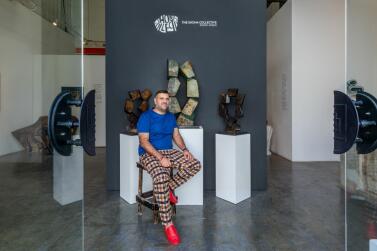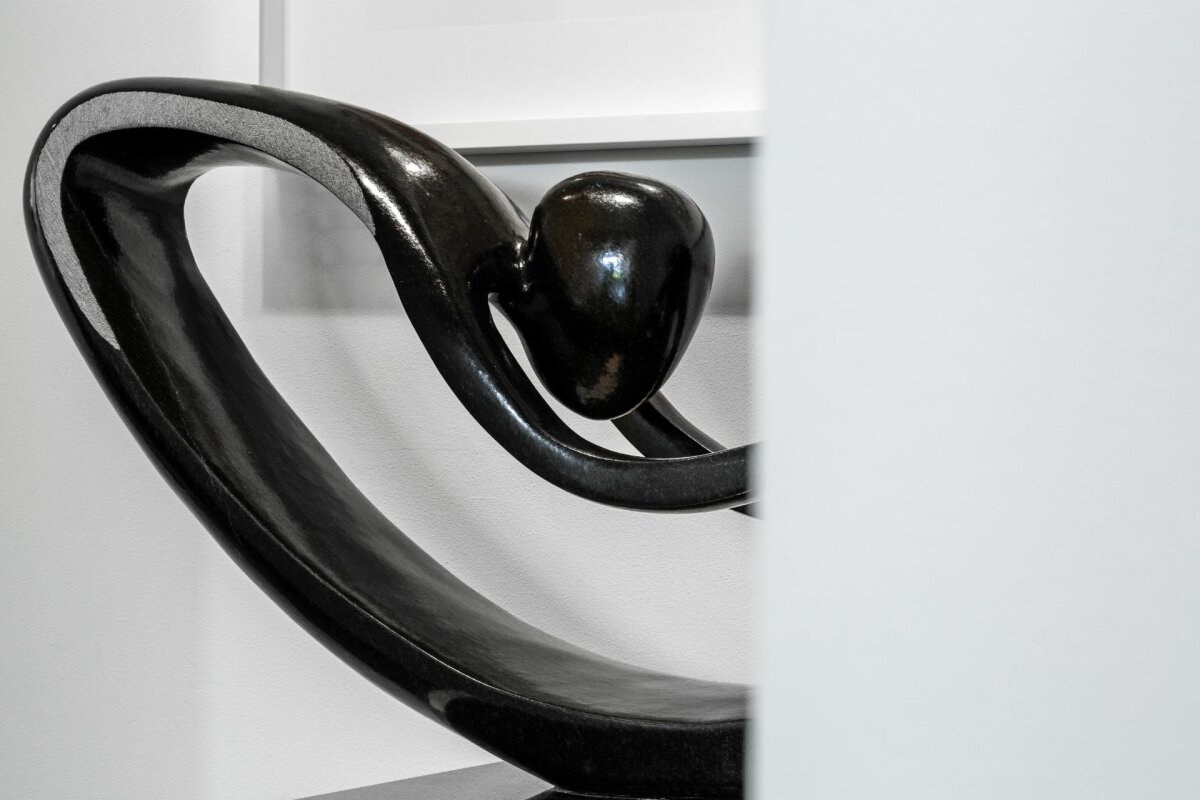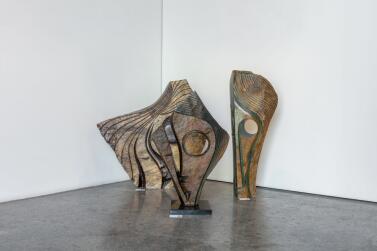In the studio: The Shona Collective

We catch up with the founder Demitris Petrides at the stunning sculptural exhibition at Mestaria Gallery
Words by Aneesha Rai in The Lifestyle · Feb 2nd, 2023
For this edition of 'In the studio', we interview Demitris Petrides, the founder of 'Shona Collective'. The Shona art style of sculpturing is woven into the history of Zimbabwe and is one of the most prominent and powerful art forms in African culture. Sculpting skills are passed down through families, and stone is still carved with just a hammer and a chisel. Shona sculptors tend to work with the hardest varieties of serpentine such as Springstone, fruit serpentine and leopard rock, as these dense stones have extremely fine grains and uniform structure, making them ideal raw materials for sculpting. Due to natural weathering processes, the colours are vibrant and range from yellow and green through brown to black. Shona sculptures are unique; literally carved from the earth, they are one-offs, and they are durable, making them fantastic feature pieces for both indoors and outdoors.
Showcased at Mestaria Gallery till the 17th of February, this unique art form has been represented by the "Shona Collective", a network of nine well-known Zimbabwean sculptors. Suave curvatures and eye-catching undulating lines, feminine, avian, and equestrian forms feature prominently.
Q: Tell us about your journey founding the 'Shona Collective'
Demitris: I inherited a Shona sculpture collection at 21 - at the time, a lot of the buyers and collectors would come to Zimbabwe for tourism and see this beautiful, unique art type that was very popular in the late nineties, early 2000s. I had an opportunity to go to the World Economic Forum in Davos in Switzerland in January of 2003, where I had the opportunity to be a key exhibitor at the forum.
Being born and bred in Zimbabwe, I got exposed to this art form as a kid because where my parents had their businesses is where a lot of the stone came from. It's important to note in an issue that the stone is indigenous to Zimbabwe, so it cannot be found anywhere else.
20 years ago and for the last 20 years before that as well, the artists were using serpentine and springstone, which are the two predominant stones. Springstone is a very hard stone - it's almost the density of granite. So if you can imagine, it comes in these huge, huge, bulky pieces which weigh two or three tonnes at a time. When we're in the quarry, we break down the stones to more feasible sizes, load them onto the trucks, and then bring them to our atelier in Harare for the artists to work on. How it's developed now is that the third generation of artists is now working with different stones. They've discovered new stones such as cobalt, leopard stone, opal, and dolomite, and I'm fortunate enough to have some of them exhibited in this collection - it's got a lot more colour and a lot more flavour.
When I started 20 years ago, I was representing 18 artists and then over the years, some of them passed away and some went about on their own. I've now narrowed it down to eight artists - we work comfortably with each other. I'm very fortunate enough that of the eight, three of them are the most reputable artists in Zimbabwe and for me, probably the best-known sculptors in Africa.






Q: Why have you chosen Dubai as a location for this exhibition?
Demitris: I'm a strong believer that history repeats itself. I got an opportunity to come here and do my first exhibition for Art Dubai back in March 2015, and it was basically a sell-out event. Post-COVID, we planned this exhibition last year with Mestaria Gallery and it kicked off this week. The local market loves it as we've now adapted to what the demands are; it was a very conscious decision. I've curated a lot of abstract work which is greatly favoured by local collectors.
Q: Could you walk us through some of the artists in the collective and their work?
Demitris: Sure - the oldest artist in the collective is Gregory Mutasa, whose signature work is hairstyles. It takes months on end to produce a piece. Another notable sculptor is Dominic Benhura - we've done very big commissioned works together; his work is really out there- it's funky, and it's got color and character. The third younger artist I'd like to highlight is David White, who usually concentrates on figurative women. When I told him we had landed this exhibition, he said, 'Let me prepare something for the Arab world for you.' That was back in September. In January, I collected three horse heads made by him, which are now in exhibition. To me, they should be in a museum, they are just perfect.




Q: Tell us about the design process for the artists. Do they collaborate?
Demitris: Every master sculptor has sub-teams and apprentices. When the stone comes out of the quarry, you've got to imagine it's three times the size of what it looks it now. The tough part of it is getting rid of the roughness and the fat around the stone. We call it 'the fat', which is the excess stone that we have no use for. The artist will then start sketching on the stone with burned charcoal, based on his vision. Nine out of ten times it's through a dream or inspiration. After this, the apprentice will start hammering out the roughness that is not required. That takes about 40% of the job. The remaining 60% of the job is done by the master who fine-tunes it till it's perfect.
Q: What's next for the collective?
Demitris: Our next destination is in LA, where we have partnered with an LA-based real estate company who are keen to get some of our pieces into Beverly Hills homes.